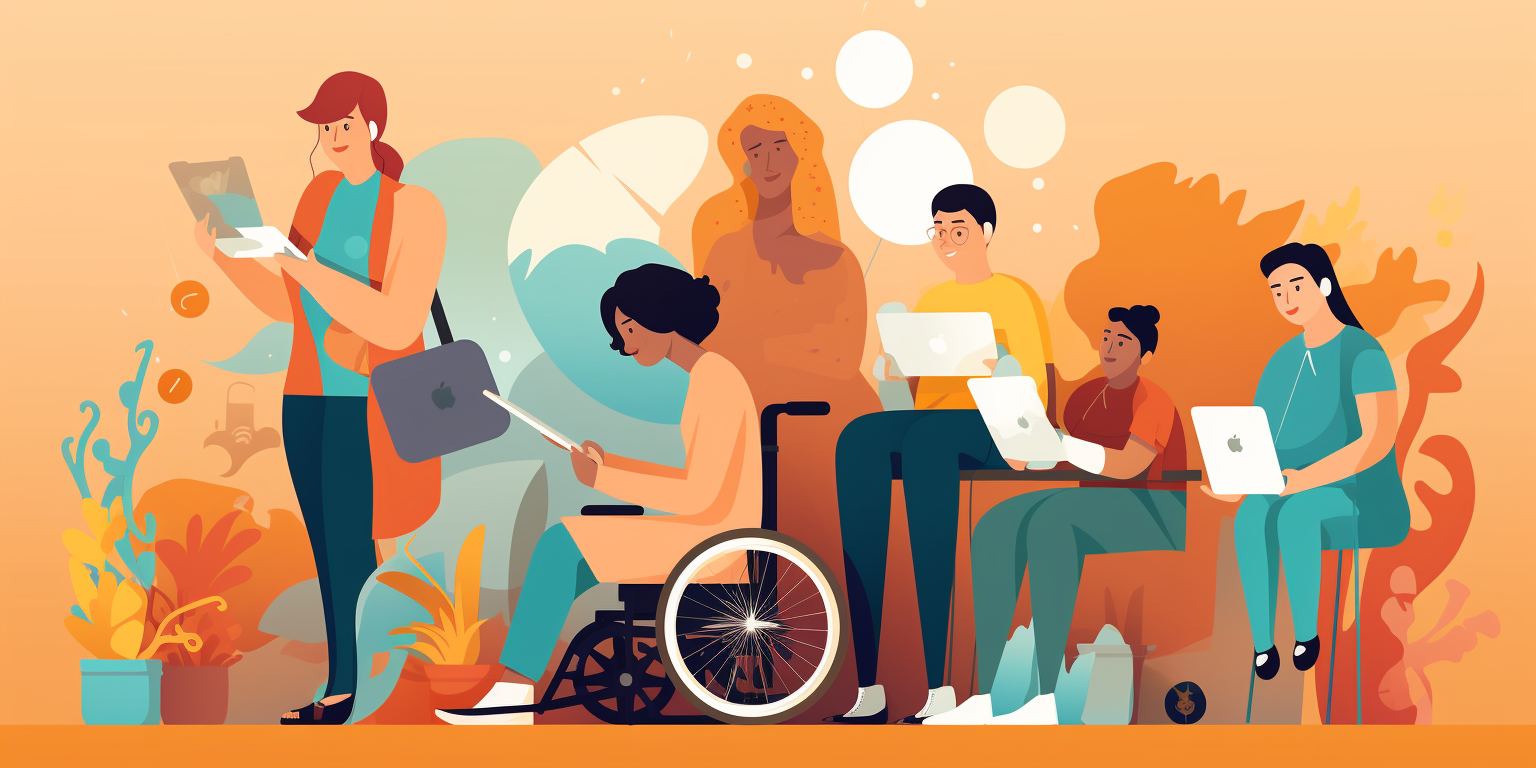In today’s digital age, where the internet is our gateway to information, services, and opportunities, ensuring that everyone can access and use websites is not just a matter of convenience but a fundamental right. Website accessibility, often overlooked, is the key to opening these digital doors wide for internet users with disabilities. To illustrate the importance of website accessibility, let’s delve into its benefits and explore how a website accessibility checker plays a pivotal role in making the online world more inclusive.
What Is Website Accessibility?
Website accessibility refers to designing and developing websites in a way that ensures people with disabilities can navigate, understand, and interact with web content effectively. Disabilities can range from visual impairments and hearing loss to cognitive challenges and motor skill limitations.
Now, you might wonder how website accessibility checkers fit into this picture. They are automated tools or software that scan web pages, identifying potential accessibility issues. These tools help web developers and designers pinpoint areas that need improvement to make their websites more inclusive.
The Empowerment of Inclusion
Before we explore accessibility tools, we should first know more about digital inclusion and how it benefits people with disabilities. Here are some of the effects of digital accessibility.
Equal access to information: Imagine a library with shelves upon shelves of books, but restricted to only a select few. This is the online experience for individuals with disabilities when websites are not accessible. Website accessibility breaks down these barriers, ensuring that everyone can access information, educational resources, and services online. This empowers individuals with disabilities to learn, work, and participate fully in society.
Economic empowerment: The internet is not only a source of information but also a platform for economic opportunities. When websites are accessible, people with disabilities can apply for jobs, access e-commerce websites, and even create their online businesses. This fosters economic independence and reduces dependency on social services.
Social inclusion: Websites are not just sources of knowledge or commerce; they are hubs of social interaction. With accessible websites, individuals with disabilities can engage in online communities, participate in discussions, and build meaningful connections. This social inclusion combats feelings of isolation and loneliness, promoting mental well-being.
Independence: Accessibility promotes independence. For individuals with disabilities, being able to navigate the web independently can be liberating. They can research topics of interest, book appointments, and manage their daily affairs without relying on others. This increased autonomy enhances their overall quality of life.
Legal and Ethical Imperatives
Website accessibility isn’t just a matter of goodwill; it’s also a legal and ethical obligation. Laws like the Americans with Disabilities Act (ADA) in the United States and the Web Content Accessibility Guidelines (WCAG) globally mandate that websites must be accessible. Businesses that failed to comply with these regulations have already seen their share of legal consequences, including fines and lawsuits.
Moreover, designing accessible websites is a matter of ethical responsibility. It reflects a commitment to treating all individuals with dignity and respect. It acknowledges that people with disabilities have the same rights as anyone else to access information and services independently.
How Website Accessibility Checkers Help
Website accessibility checkers are invaluable tools in the quest for inclusive online experiences.
Here’s how they assist web developers and designers:
Automated scans
Accessibility checkers automatically scan websites for issues, saving time and effort. They can identify problems such as missing alternative text for images, insufficient color contrast, or improperly structured content headings and subheadings.
Detailed reports
These tools generate detailed reports outlining the specific accessibility issues found on a website. This makes it easier for developers to understand what needs fixing and where to focus their efforts.
Real-time feedback
Some accessibility checkers offer real-time feedback, which is particularly helpful during the development process. Developers can immediately address issues as they arise, leading to a more efficient and accessible website.
Guidance on compliance
Many accessibility checkers provide guidance on how to fix identified issues and ensure compliance with accessibility standards like WCAG. This educational aspect is essential for long-term accessibility efforts.
Continuous monitoring
Accessibility is not a one-time task; it requires continuous monitoring and maintenance. Website accessibility checkers can be used regularly to ensure that a website remains inclusive, even as new content is added.
Digital Accessibility: Our Collective Responsibility
Website accessibility isn’t solely the responsibility of web developers and designers; it’s a collective effort that involves everyone who interacts with the digital world. It’s a fundamental requirement for a fair and inclusive digital society. By ensuring that websites are accessible, we empower individuals with disabilities to unlock the full potential of the internet, fostering economic independence, social inclusion, and personal growth.
Website accessibility checkers are invaluable tools in this journey, helping us identify and rectify issues that might otherwise go unnoticed. Remember, making the internet accessible is not just a legal requirement. It’s a moral obligation that benefits us all by creating a more inclusive online world.









